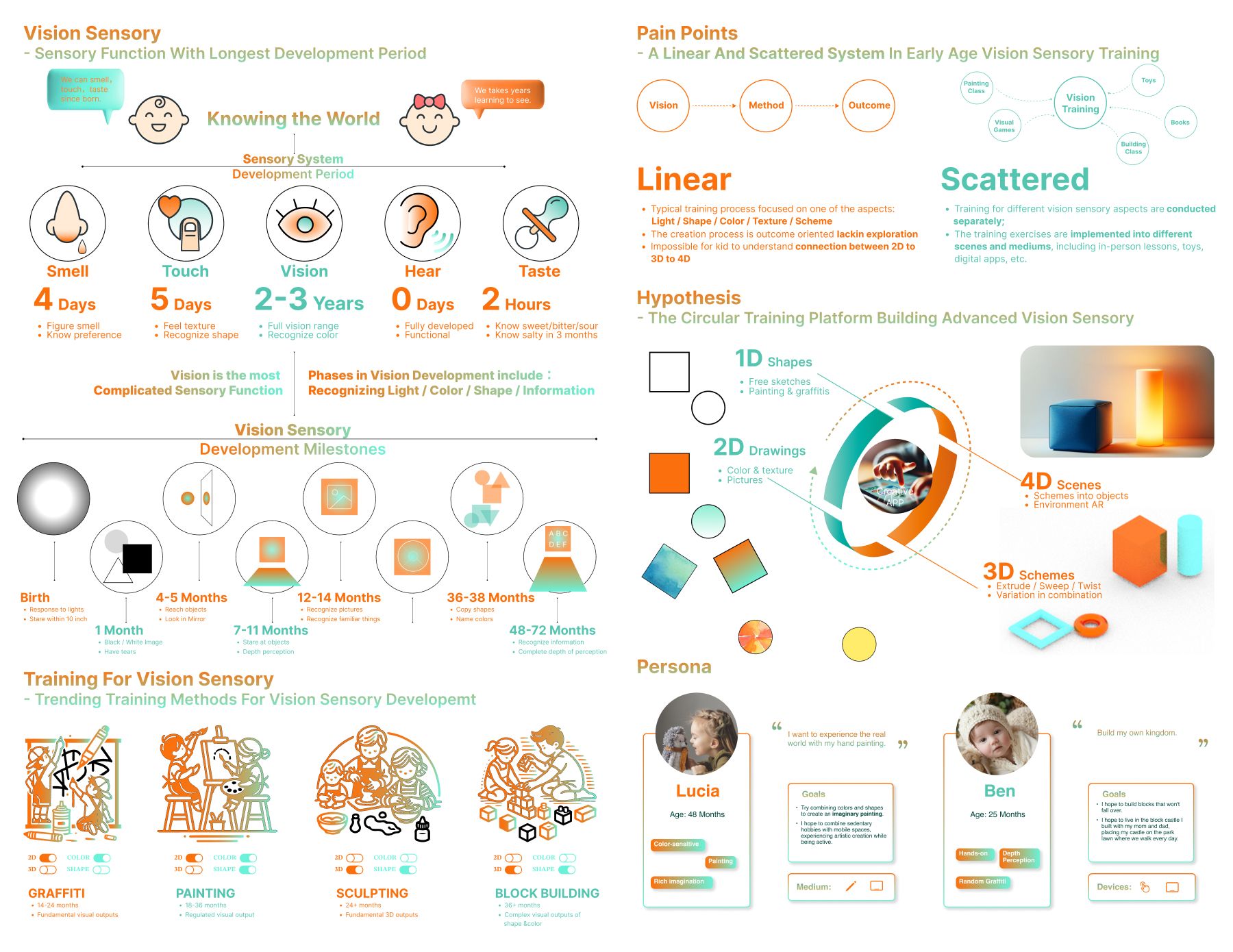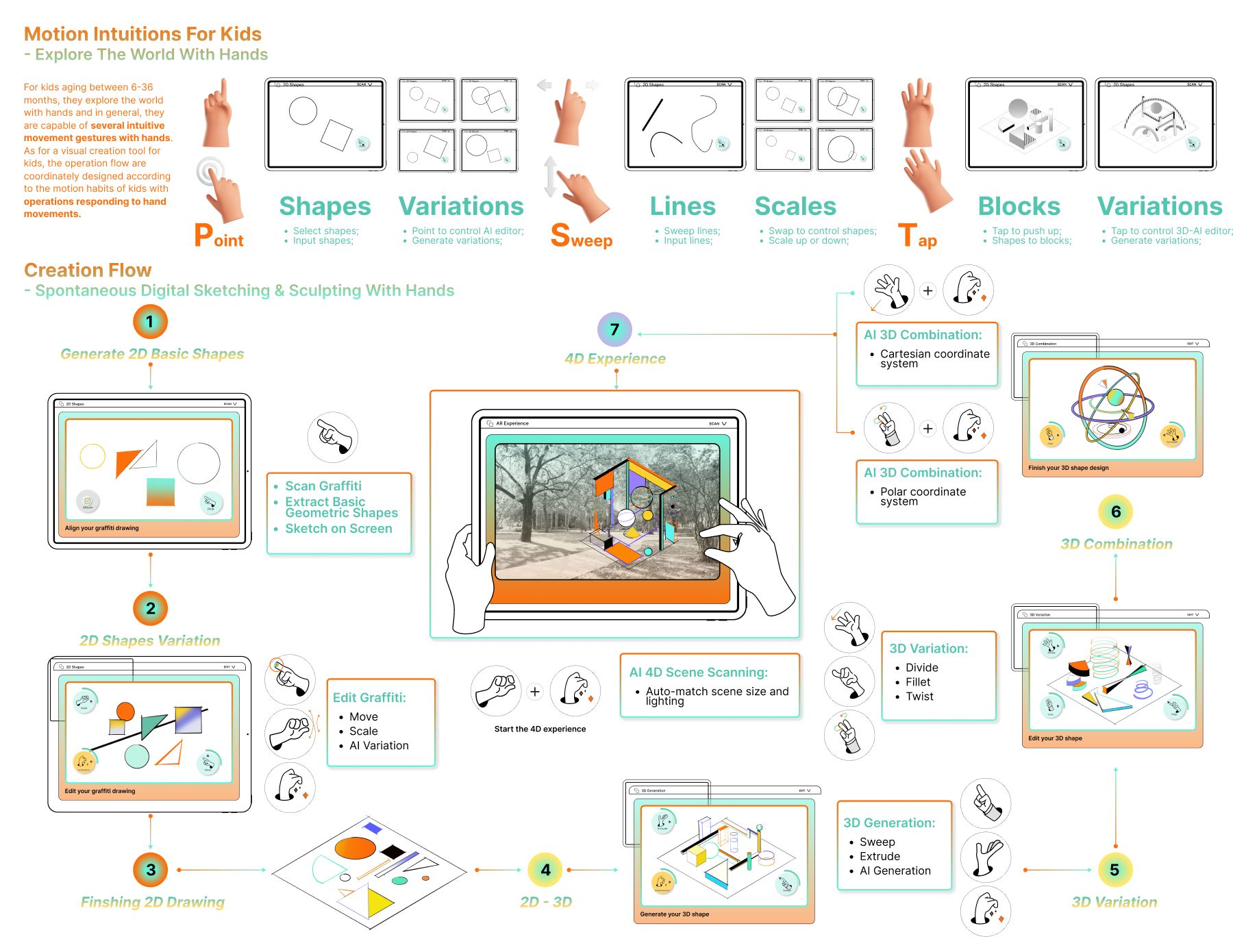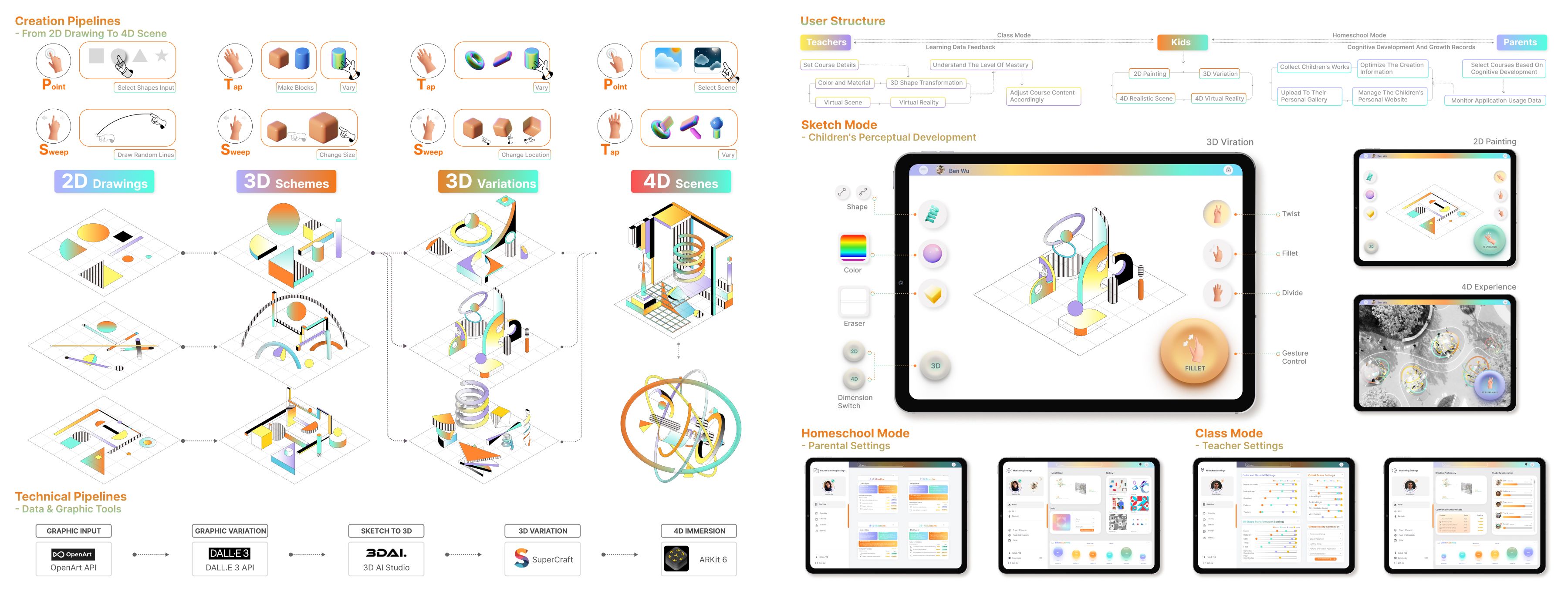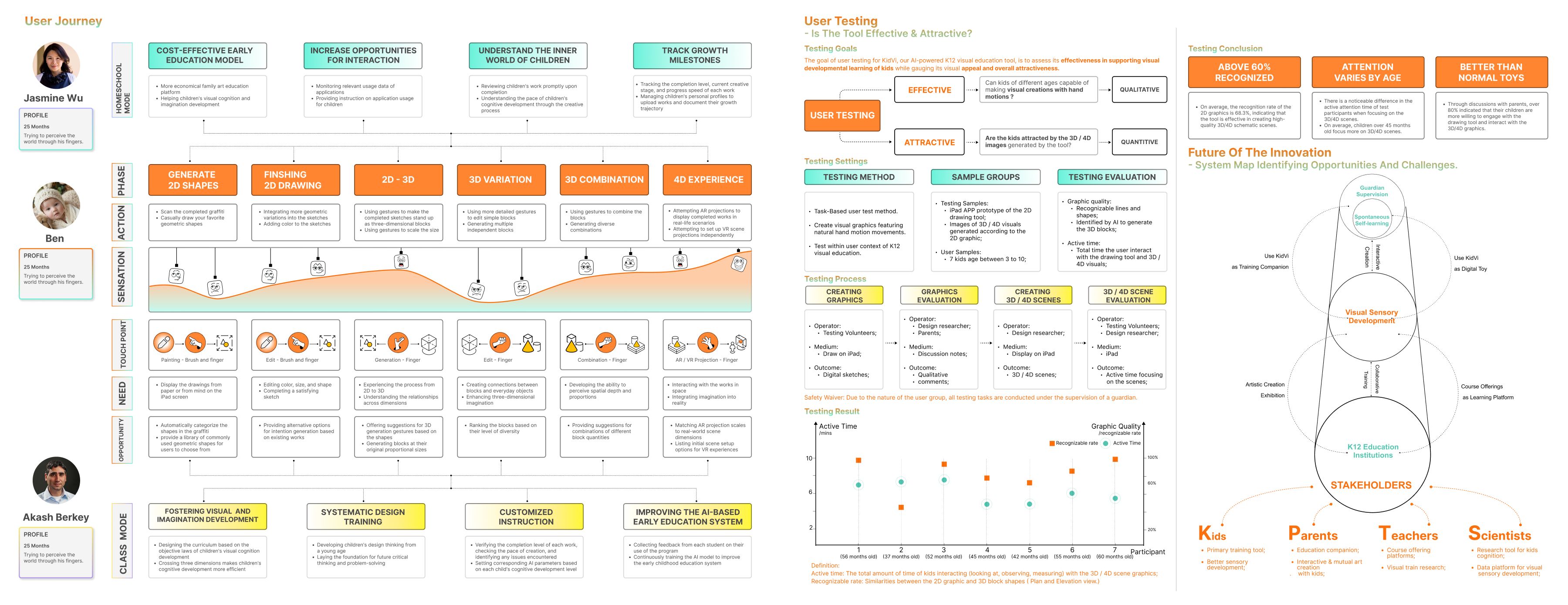
Designers
Weiyi Tang , Wenbo Zhang
Year
2025
Category
New Talent
Country
United States
School
Harvard University

Three questions to the project team
What was the particular challenge of the project from a UX point of view?
Key challenges these users face include a lack of engaging, interactive tools that foster sensory development in a holistic way, limited access to age-appropriate educational materials, and varying levels of access to necessary equipment. The wider context includes its application in home-based early education, K12 educational settings, and research institutes focused on child cognitive science, where understanding developmental milestones is crucial. Additional factors affecting users are the physical and psychological health of children, which can influence engagement, as well as the accessibility and availability of suitable equipment.
What was your personal highlight in the development process? Was there an aha!-moment, was there a low point?
Our research for KidVi employed a combination of literature reviews, user interviews, and user testing throughout its development. The process began with a literature review and user interviews during the ideation phase to understand needs and preferences. After initial prototypes were developed, user testing was conducted to evaluate KidVi’s effectiveness in enhancing visual developmental learning and its appeal to young users. Results showed a 68.3% recognition rate for 2D graphics and high engagement with 3D/4D scenes, with over 80% of parents noting increased interest from their children. These insights informed refinements, aligning KidVi with user needs and maximizing its educational impact.
Where do you see yourself and the project in the next five years?
The assumed business model for KidVi is a multi-faceted approach targeting the visual sensory development market, with applications in early childhood education, visual brain training, and mental rehabilitation. Key stakeholders for KidVi include children as primary users, parents as educational partners, teachers for course enhancement, and scientists for cognitive research. Beyond K12 education, KidVi has potential for use in cognitive development and rehabilitation, expanding its reach and utility. Revenue streams could include partnerships with NGOs for artistic creation exhibitions and course offerings, allowing KidVi to serve as both a learning and art creation platform.


